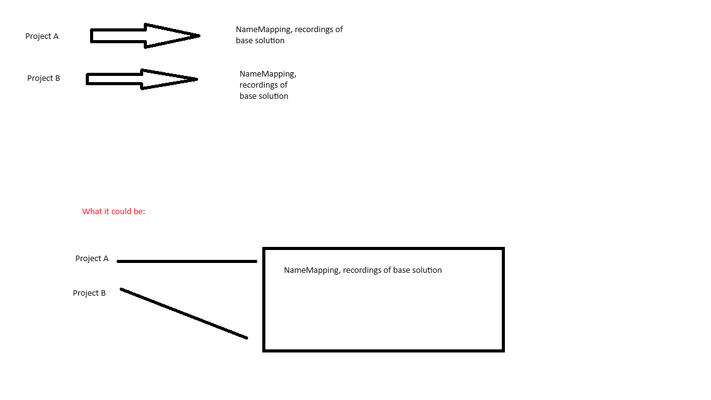"CloseAllModalDialogs()" Script Built-In Function
If a Desktop test fails, it can leave modal dialogs open, which will then block any future interactions with the main application window (or other app-owned windows). It would be nice to have a function that can be called at the start of each test that would ensure that all modal dialogs belonging to the application are closed (including system modals opened by the app, e.g. "Open File" or "Open Folder"). (And something like this would be valuable in Keyword Testing as well.)103Views0likes5Commentsplease add Qt6.5 (LTS) Support
Qt6.5 (LTS) was released on April 3, 2023 and some bugs in Qt6.2 seem to be implemented only in Qt6.5. I believe Qt is widely used in desktop softwares and the demands of testings of softwares with newest Qt is large. However, TestComplete supports currently up to Qt6.2 and no update plan is published. We found that the newest TestComplete (15.54) cannot recognize any Qt-Objects in our software with Qt6.5. (Qt6-Objects are not recognized) Therefore, I would like to request Qt6.5 support urgently. Also, it would be helpful, if we could hear, when Qt6.5 is planned to be supported. Thank you.509Views8likes5Comments.NET 9 Support
Hello, Our application needed to update to .NET 9 and since then there has been an error that has become much more prevalent in TestComplete. Here's my original post about it. I've been in contact with support and they had mentioned that .NET 9 wasn't fully supported by TestComplete yet. Is there any way this support could get added to your backlog?32Views0likes0CommentsGlobal Items in TestComplete
Every project has his Stores, NameMapping, TestedApps etc in a Project Suite project scoped. My idea is, that if you have a common objects that can be re-used by multiple projects, recordings, name mapping objects, instead of having to re-import them for every project in your suite, you have the option to also have them globally on Project Suite Level, to be then shared over the various projects instead of each project having to it's own version of Name Mapping, Tested Applications and such. Example: Project A -> user recordings, namemapping from base solution Project B --> user recordings, namemapping from base solution What it is today and what it could be: If you use global namemapping, user recording that your projects digest, then you only have to update/modify them in one place, instead of all your projects. I do would have the option still to have project scoped, namemapping, recordings etc next to the globally ones.150Views8likes3CommentsImplementation of Built-in RightClickNextTo Function in OCR Module
We propose the addition of a new built-in function called RightClickNextTo in the OCR module of TestComplete. This function would work similarly to the existing ClickNextTo but would simulate a right-click action next to an identified text element based on its coordinates. Currently, we have implemented a custom RightClickNextTo function by leveraging the x1, y1, x2, y2, height, and width coordinates obtained from the Bounds function of the OCR object. After identifying the text, the function calculates the necessary offset and direction to perform the right-click action. However, we initially encountered challenges when applying this function to the BlockByText object due to coordinates errors. After further experimentation, we realized that the coordinates should be applied directly to the ClickR in the image object or the screen object identified through the TestComplete Object Spy, bypassing the OCR object's bounds error. While this solution works, we believe that incorporating this functionality as a native built-in feature within the OCR module would streamline the process and make it more accessible to all users. The RightClickNextTo function could be used for more precise interaction with text elements based on their coordinates, particularly for scenarios where right-clicking actions are needed, improving the flexibility and usability of the OCR module for automated testing. By making this a built-in function, TestComplete users would save time and avoid errors when trying to implement similar solution manually, improving overall productivity and reducing complexity in the automation process. Code Snippet: [ Refer the attached image] This code snippet demonstrates how the custom RightClickNextTo function calculates the coordinates and applies a right-click at the identified text's location using the image or screen object. We truly appreciate your consideration of this suggestion, as making it a built-in function would greatly enhance the usability of the OCR module for right-click action, benefiting users and simplifying the automation process.
